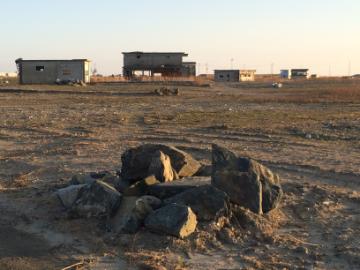
Lessons From the Tsunami
On the weekend of January 6-8, I traveled to the Japanese city of Minamisoma on the coast of Fukushima Prefecture. Minamisoma was and is at the center of what the Japanese call the “triple disaster” of March 11, 2011: the Great East Japan Earthquake (the most powerful in the recorded history of Japan); a resulting tsunami that ravaged the eastern coast of Honshu, Japan’s main island, and at one point reached 130 feet in height; and the nuclear meltdown at the Fukushima Daiichi Nuclear Power Plant. Minamisoma is 20 kilometers north of the nuclear plant and was devastated by all three aspects of the “triple disaster.”
I went to spend the weekend at a relief center run by the Catholic Church in Japan and called Caritas Minamisoma. The idea behind the center, in part supported by a major grant from Catholic Relief Services in the United States, is to establish a long-term presence to provide spiritual and material support for the city as it recovers from the disaster. The center welcomes volunteers from all over Japan who are sent out in teams to do jobs like cleaning out houses abandoned after the nuclear disaster. Staff members at the center also are focused on a practice of “accompaniment”: They go out to existing community centers in the area and spend time visiting with the thousands of people in the city, many of them elderly, who have been living in temporary housing in the years since the “triple disaster” rendered their homes uninhabitable.
Being in Minamisoma raises many profound questions – about the relationship of human beings to the natural world; about hubris and technology and myths of progress that allow nuclear plants to be built in a place where such a massive tsunami can hardly be considered a huge surprise.
But being there especially had me thinking about the human factor in what happened and in how things like safety and risk and the environment are understood. When we think about the safety of something like a nuclear plant, do we think about its safety only in terms of a technical capacity to absorb the possibly negative effects of a natural occurrence like a tsunami?
Or we do also think of safety in terms of the human factor in managing any technical response to a devastating natural blow – a human factor that involves not only nuclear plant technicians but also the whole interaction of business leaders and political officials in the regulatory process (a process widely criticized for being lax in the case of Fukushima Daiichi)?
Even more, do we think of safety in a painstaking way not only in terms of what might immediately happen in the event of a disaster – for instance, that many people might have to evacuate? But do we also think of safety in a much longer time frame beyond the immediacy of a disaster – for instance, in terms of how an elderly person with nowhere else to go might experience a years-long displacement from her home as an ongoing threat to her desire to feel safe?
Engineering ethics has long considered the assessment of safety to be as much a social factor as a technical decision. The enormous human cost of the “triple disaster” in Minamisoma powerfully brings home the ethical importance of insisting on the social factor, fully considered, in all such assessments of safety.
David DeCosse is director of Campus Ethics at the Markkula Center for Applied Ethics. Views are his own.